About one month before their mission, Apollo 10 astronauts Thomas P. Stafford, Eugene A. Cernan, and John W. Young held a press conference at the Kennedy Space Center (KSC). The trio described their upcoming flight as essentially a dress rehearsal for the Moon landing, with Stafford stating that Apollo 10 will “sort out all the unknowns and actually pave the whole way for the lunar landing mission.” According to Apollo Spacecraft Program Manager George M. Low, the plan for Apollo 10 was to do “everything that we did on Apollo 9, only in lunar orbit.” Officials also announced that the Apollo 10 Command Module may carry a color TV system in addition to the standard black and white cameras. The color camera, equipped with a zoom lens, would provide live TV broadcasts from the spacecraft during critical mission operations and provide viewers at home with a glimpse of life aboard an Apollo spacecraft during a lunar mission. Views of the Earth as well as the lunar landscape were also expected.
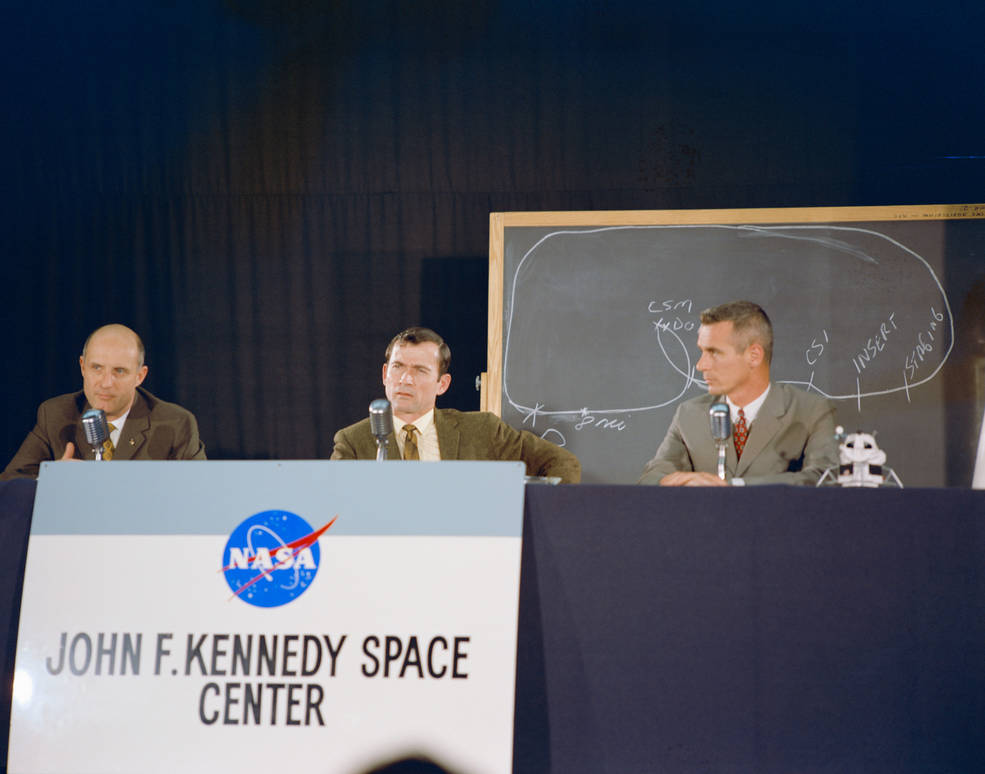
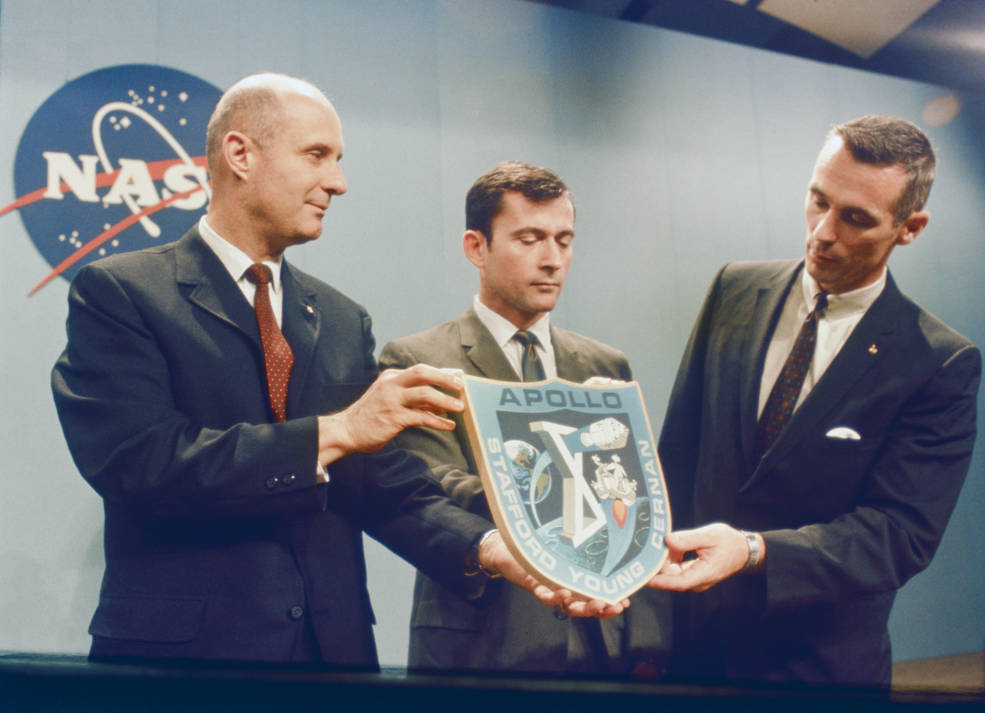
Left: Apollo 10 astronauts (left to right) Stafford, Young, and Cernan participate in crew press conference at KSC.
Right: Stafford, Young, and Cernan pose with their mission patch.
Stafford, Cernan, and Young announced the call signs they gave their spacecraft to aid in communications with the ground – the Command and Service Module (CSM) was Charlie Brown and the Lunar Module (LM) Snoopy, after characters in the Peanuts© comic strip by Charles M. Schulz. They went on to describe their eight-day mission, beginning with a very busy first day. After launch from Launch Pad 39B, they would make two revolutions around the Earth, still attached to the Saturn V’s S-IVB third stage. The S-IVB would reignite, propelling them toward the Moon. Shortly after that, they would undock Charlie Brown from the S-IVB, turn it around and dock with Snoopy, tucked away in the top of the rocket stage, in a maneuver called transposition and docking. After jettisoning the S-IVB, they would coast toward the Moon for about three days. The Service Propulsion System (SPS) would fire to drop them into orbit around the Moon. Stafford and Cernan would enter the LM and undock, leaving Young alone in the CSM. Using the LM’s Descent Propulsion System engine to lower their altitude, Stafford and Cernan would descend to about 50,000 feet above the lunar surface, and photograph the primary landing site for Apollo 11 in the Sea of Tranquility. Snoopy would travel up to 350 miles from Charlie Brown during these maneuvers. The Ascent Propulsion System engine would then fire as the descent stage is jettisoned, in a simulation of a litfoff from the Moon, and Stafford and Cernan would then complete a rendezvous and docking with Young in the CSM. After jettisoning the LM’s ascent stage and completing 11 more orbits around the Moon, Apollo 10 would fire its SPS engine for the retrun trip to Earth, ending with a splashdown in the Pacific Ocean. Except for the actual descent to and touchdown on the surface, Apollo 10 would follow all the steps of the actual Moon landing mission.
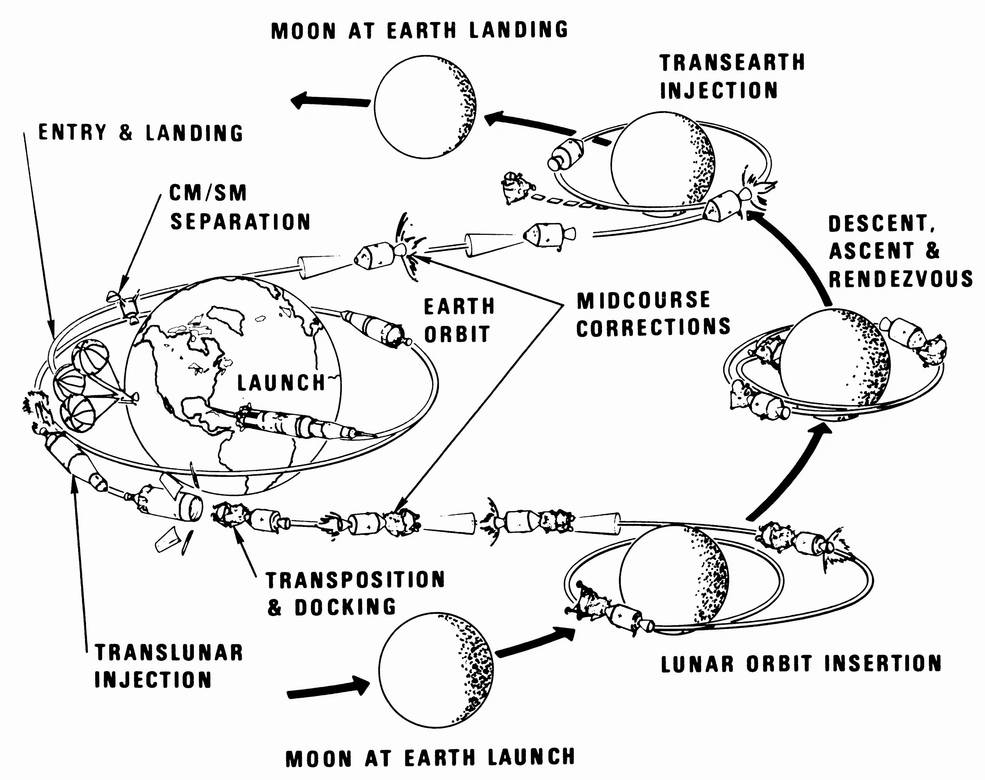
Schematic illustration of the Apollo 10 mission.
Engineers at KSC completed the Flight Readiness Test (FRT) between April 7 and 10. The main purpose of the FRT was to ensure that all the vehicle systems were in a state of flight readiness and functioned well with ground support equipment. Successful completion of the FRT paved the way for the Countdown Demonstration Test in early May, a dress rehearsal of the actual countdown for the launch. Stafford, Cernan, and Young took part in an emergency egress drill at Launch Pad 39B, including inspecting the slide wire escape mechanism and the blast room, a concrete reinforced structure under the launch pad to be used in case of a catastrophic emergency during fueling of the rocket or the countdown.
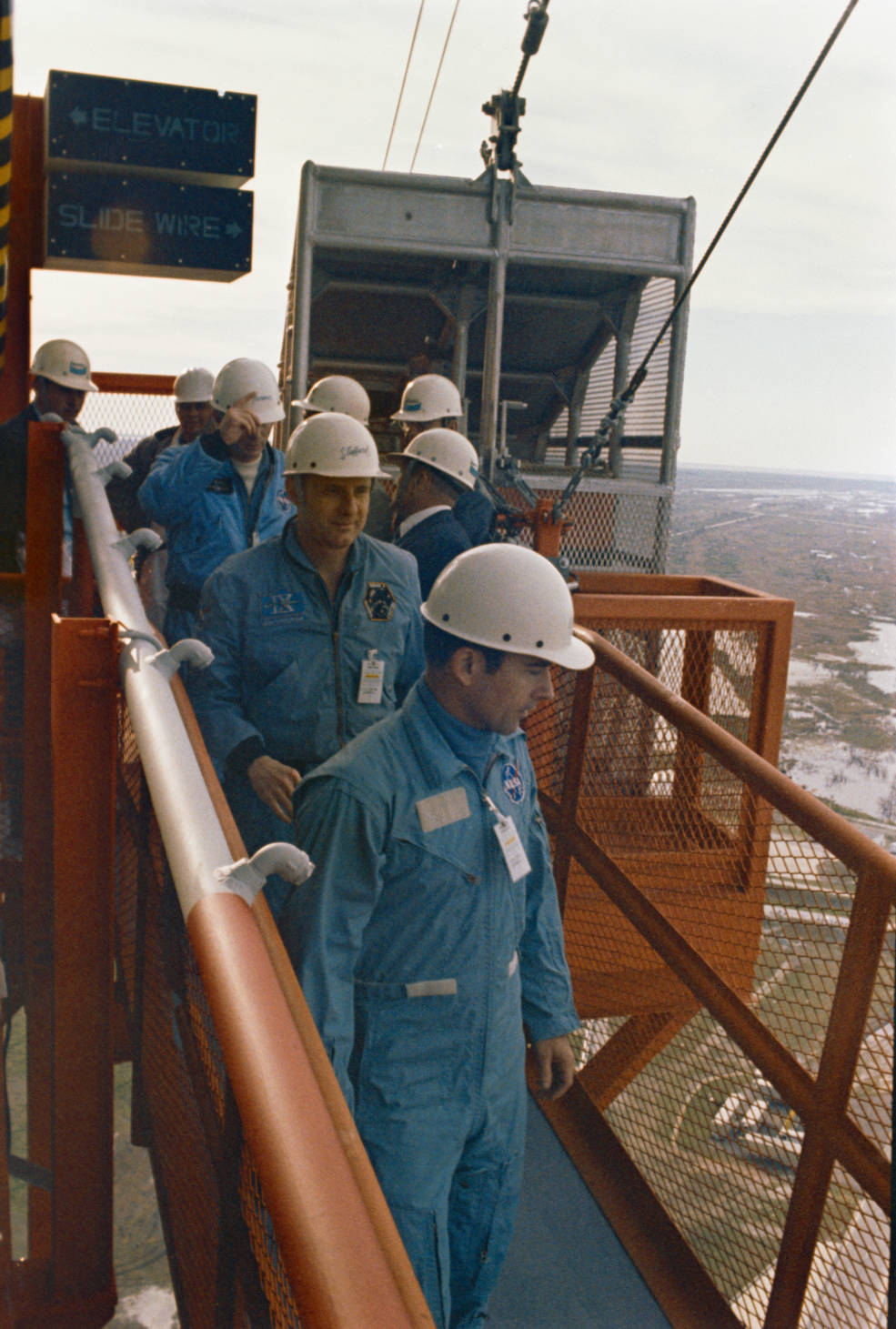
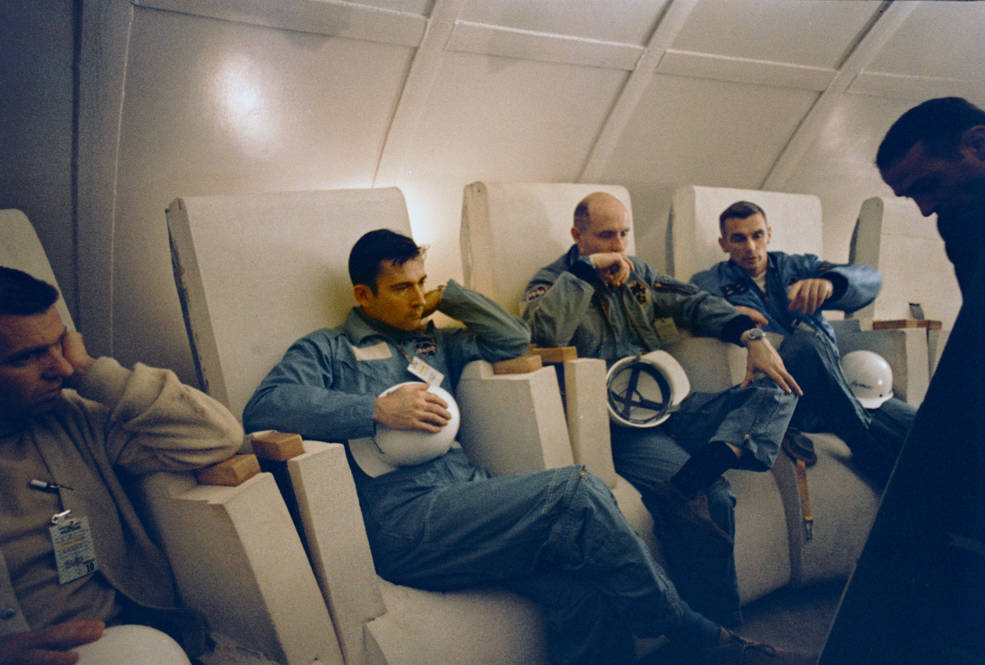
Left: Apollo 10 astronauts (front to back) Young, Stafford, and Cernan inspect the slide wire escape mechanism at
the top of Launch Pad 39B. Right: Apollo 10 astronauts (left to right) Young, Stafford, and Cernan are briefed on
escape protocols inside the blast room beneath the launch pad.
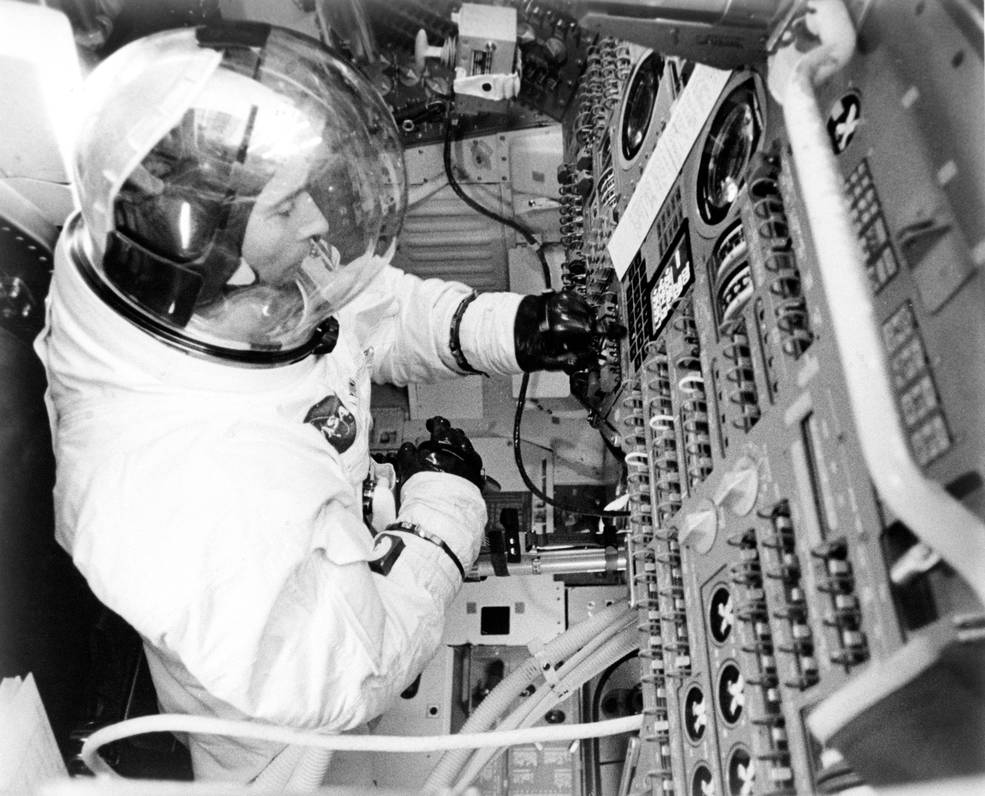
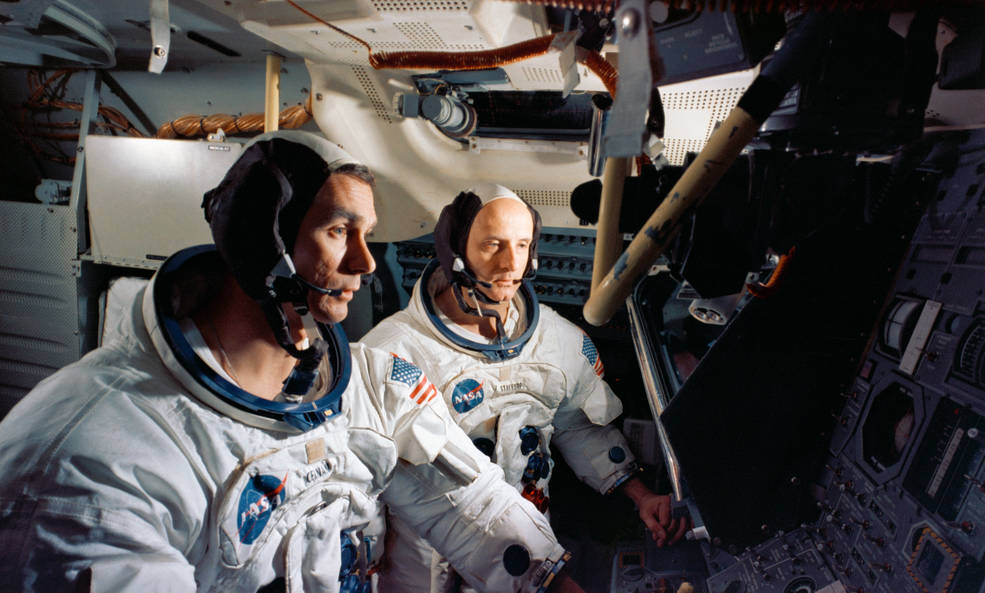
Left: Young in the CM flight simulator. Right: Cernan (left) and Stafford in the LM flight simulator.
The Apollo 10 crew participated in simulations of various phases of their mission, using LM and CSM flight simulators at KSC. Flight controllers in Mission Control at the Manned Spacecraft Center (MSC), now the Johnson Space Center in Houston, participated with the crew in many of these simulations.
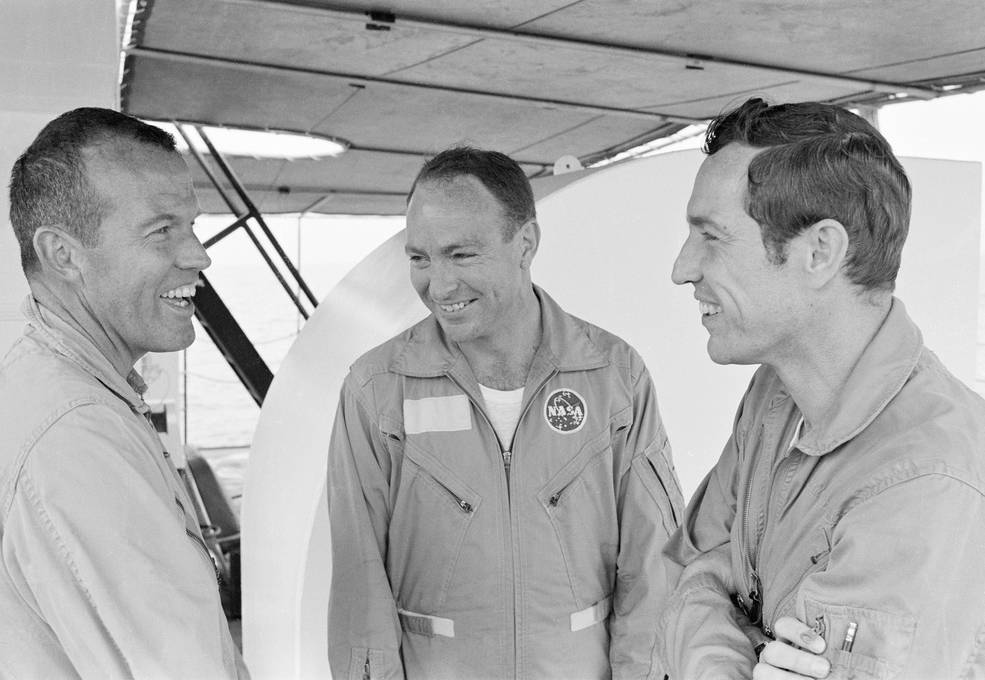
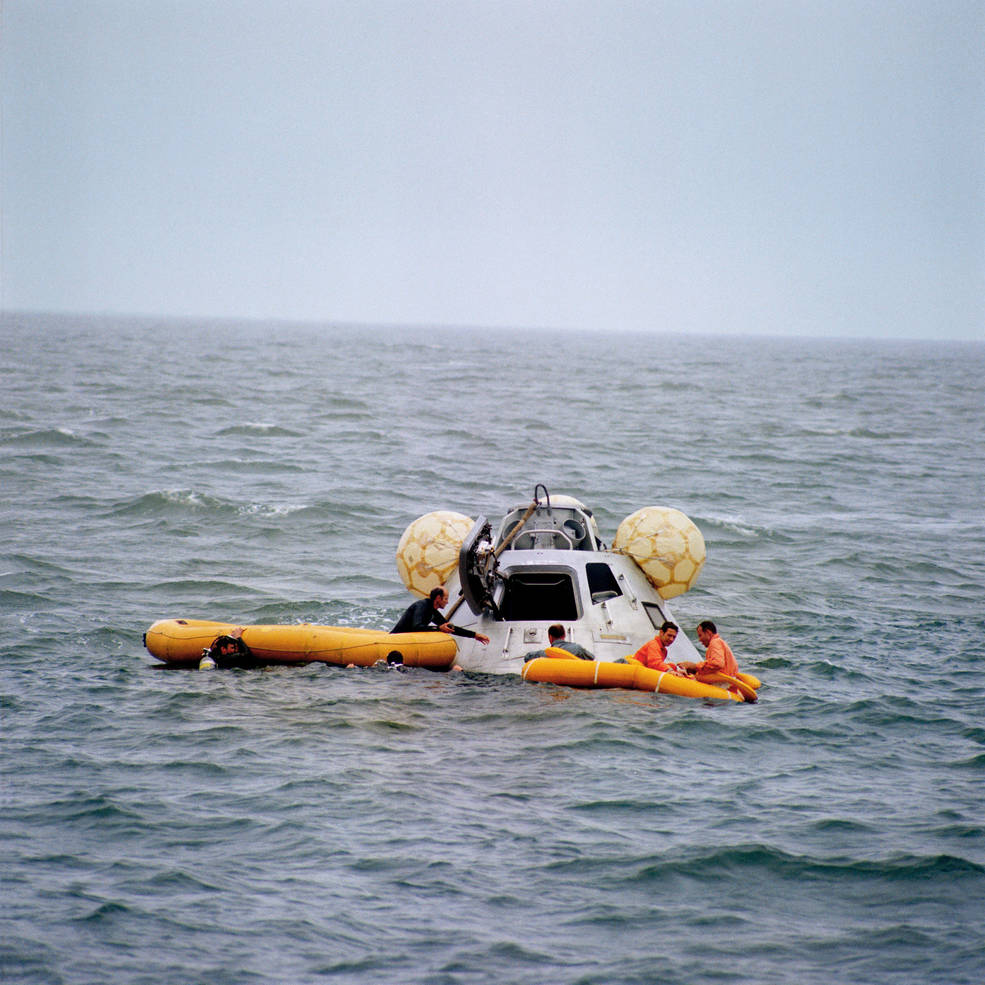
Left: Apollo 10 backup crew (left to right) Cooper, Mitchell, and Eisele preparing for water egress training.
Right: Apollo 10 backup crew (in life raft, left to right)
Apollo 10 backup crewmembers L. Gordon Cooper, Edgar D. Mitchell, and Donn F. Eisele, completed water egress training in the Gulf of Mexico on April 4. Using a boilerplate Apollo Command Module and tended by the Motorized Vessel (MV) Retriever, the astronauts practiced emerging from the capsule as if after splashdown, and with assistance from divers awaited in life rafts for a helicopter to retrieve them from the water.


























